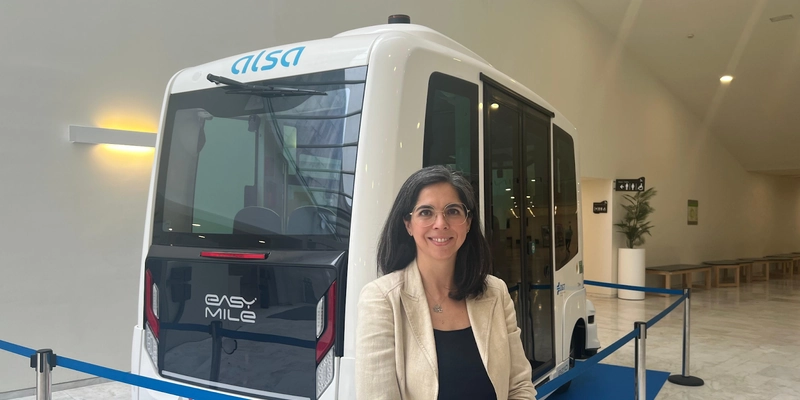The future of urban transport in the region is turning green to meet European objectives.
In this context, Alsa positions itself as a key player in the electrification of mobility at a national level.
The transport company is making progress towards its goal of a zero-emission urban fleet by 2035, and an interurban fleet by 2040.
This plan is not limited to the acquisition of electric vehicles.
A comprehensive approach is provided, including charging infrastructure, driver training and improved operational management.
During Moveo, Patricia López, head of the Alsa Innovation Center, explains to Mobility Portal España:
“We are evaluating the effectiveness of the cars and exploring ways to optimize our operations.”
In this strategy, one of the challenges is the supply of electric buses.
“In Oviedo, 70 buses will be managed, which requires significant infrastructure work to meet the charging needs of these vehicles,” she explains.
The Asturian city council has confirmed to this newspaper that it has already transformed more than 46 per cent of its urban bus fleet into eco-friendly or zero-emission vehicles, following in the footsteps of other major capitals.
Alsa currently has more than 5,000 cars in its fleet, of which more than 100 are electric, “a number that is constantly increasing.”
Their plan includes a multi-brand approach, where each manufacturer presents different characteristics in terms of energy consumption and charging efficiency of each car.
“We are working with several suppliers, evaluating which vehicles work best in our operations,” explains the head of the Innovation Center.
Not only that.
The battery duration is also an aspect to consider in their strategy, as it can vary depending on the weather conditions, driving style, and the terrain of the route.
In this context, driver training is an essential aspect.
“It is vital for drivers to adapt their driving style to the specificities of electric vehicles,” asserts López.
She emphasizes: “This involves optimizing the parts where they can self-recharge and improve efficiency.”
This educational approach in turn extends to understanding how the weather impacts the performance of eBuses.
“We are seeing that under certain conditions, such as humidity or cold, performance can be affected,” she says.
To ensure the operational capacity of its fleet, Alsa implements a night-time supply plan at the base.
“We carry out charging in the garage overnight, as the buses need several hours to ‘refuel’ properly,” she explains.
The company is assessing various technologies in this field.
This is essential to meet demand on longer routes that, at present, “cannot be fully electrified.”
In this context, Oviedo aims to become a benchmark in the sustainable urban transport model.
This is why it has been one of the first cities to implement a fully electric and articulated bus, managed by TUA.
The collaboration between Alsa and the City Council of Oviedo is essential for the success of this transition, in which both are working together to ensure that the charging infrastructure and the electric fleet are effectively integrated.

What other technologies is Alsa considering?
The incorporation of hydrogen vehicles is also on the company’s agenda.
This type of fuel, which can be generated by renewable energy, is presented as a viable solution for long-distance transport.
“Charging time is reduced to approximately nine minutes and the car’s range can reach up to 500 kilometres, which is crucial for our operations,” they explained to Mobility Portal España at the time.
The company currently has four hydrogen buses operating in Torrejón and Zaragoza.
“We also have two autonomous vehicles: one that operates on the Llanera Technology Park line and another that covers the route through the Autonomous University of Madrid campus,” says Patricia López.








